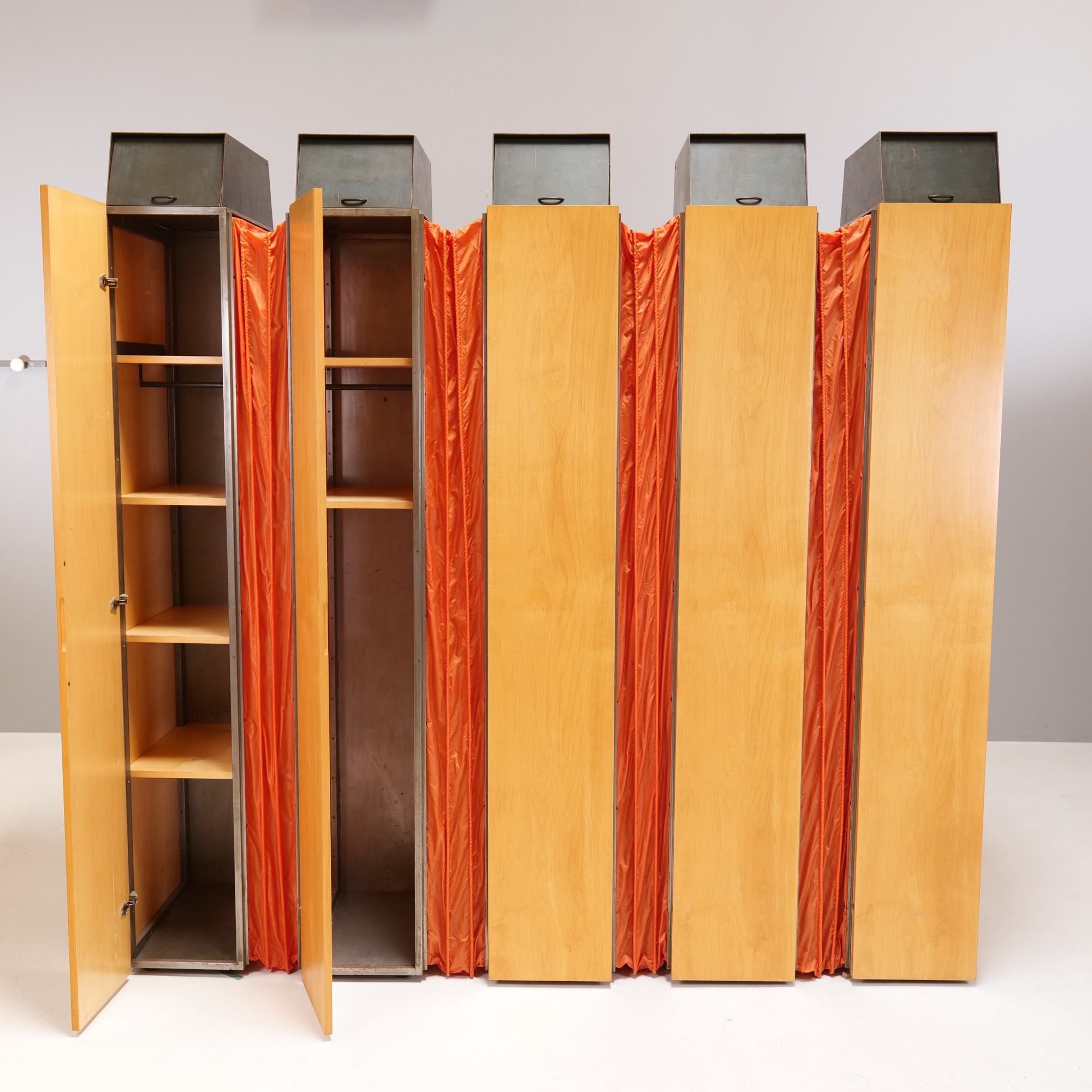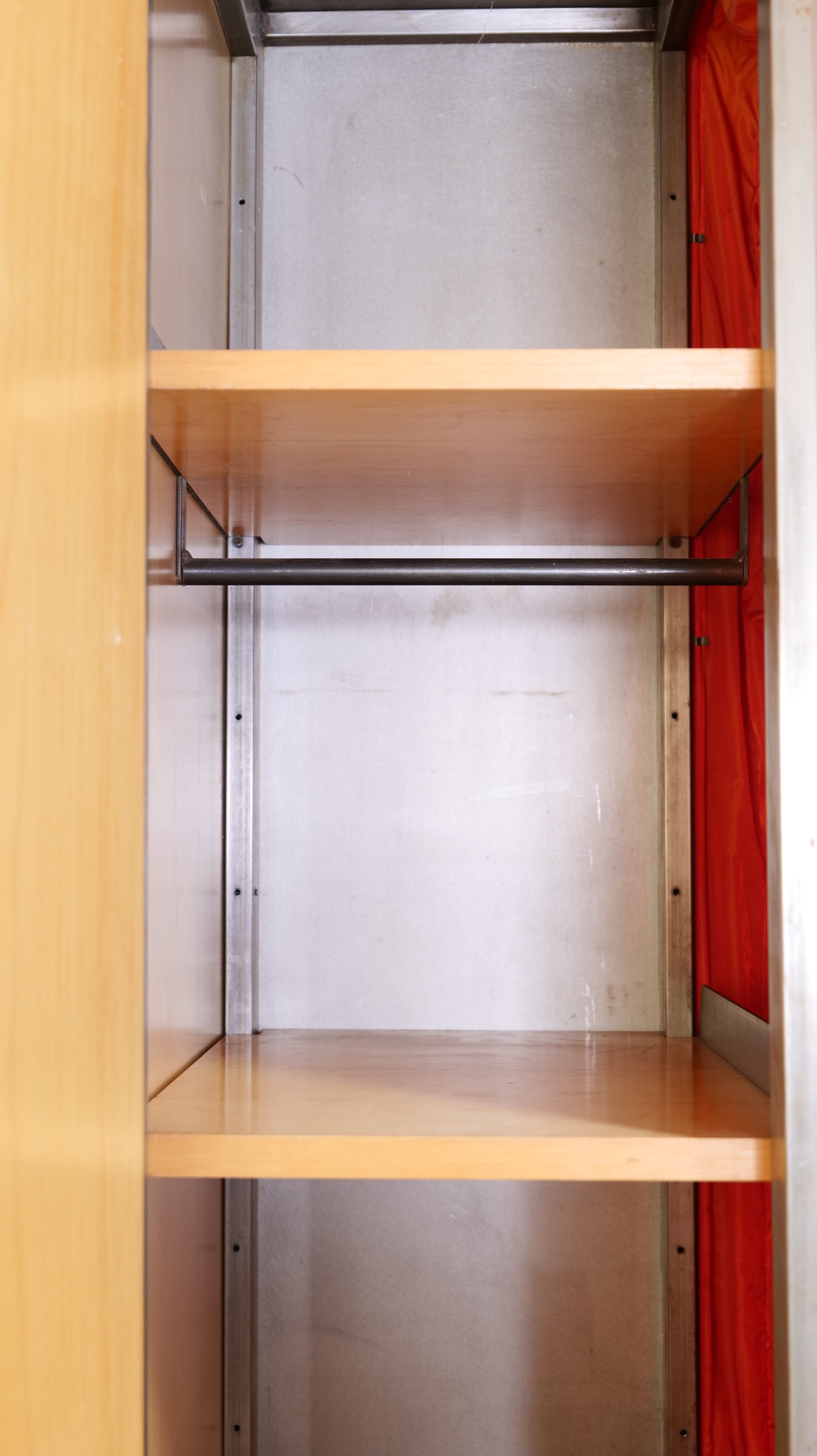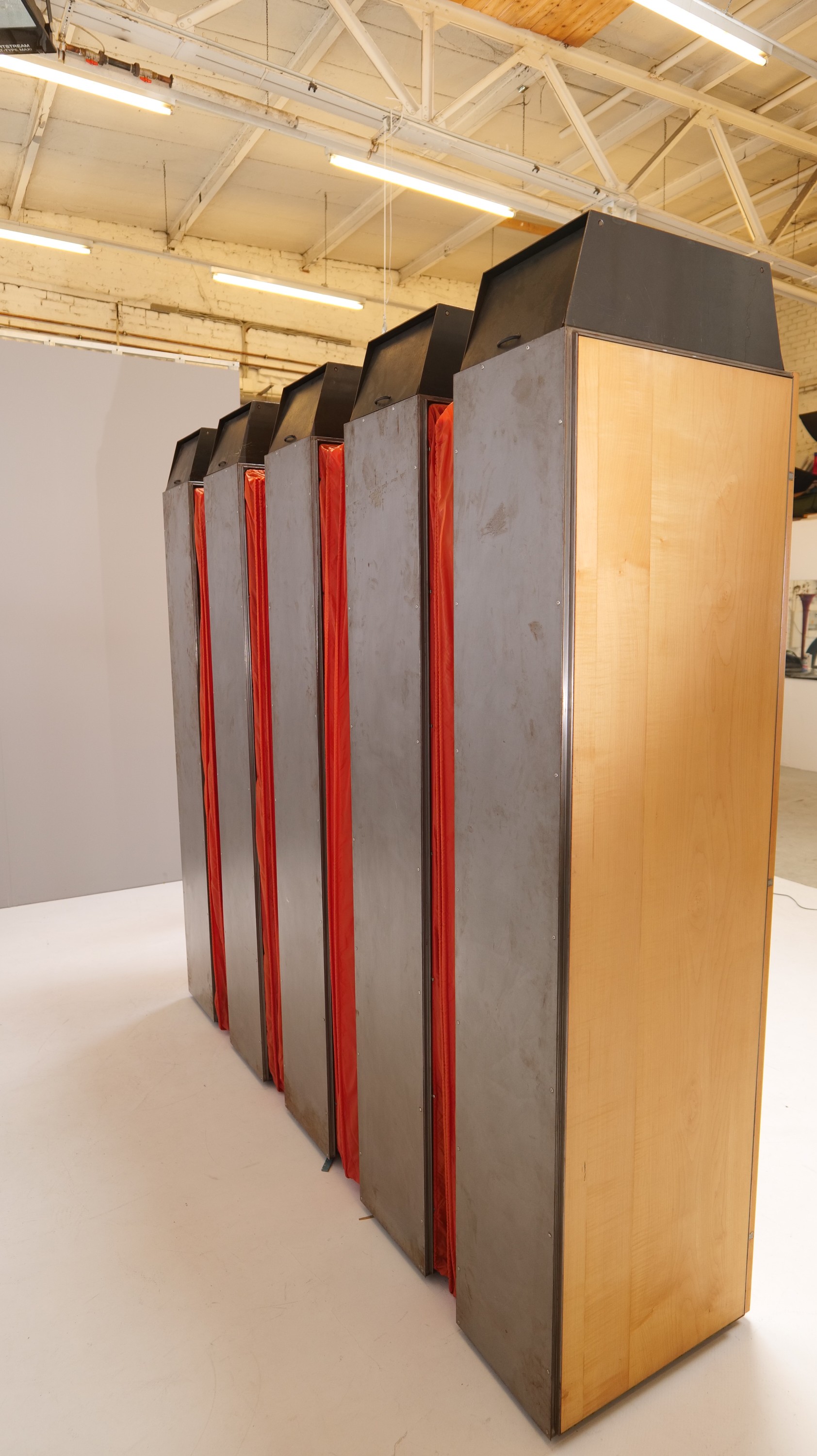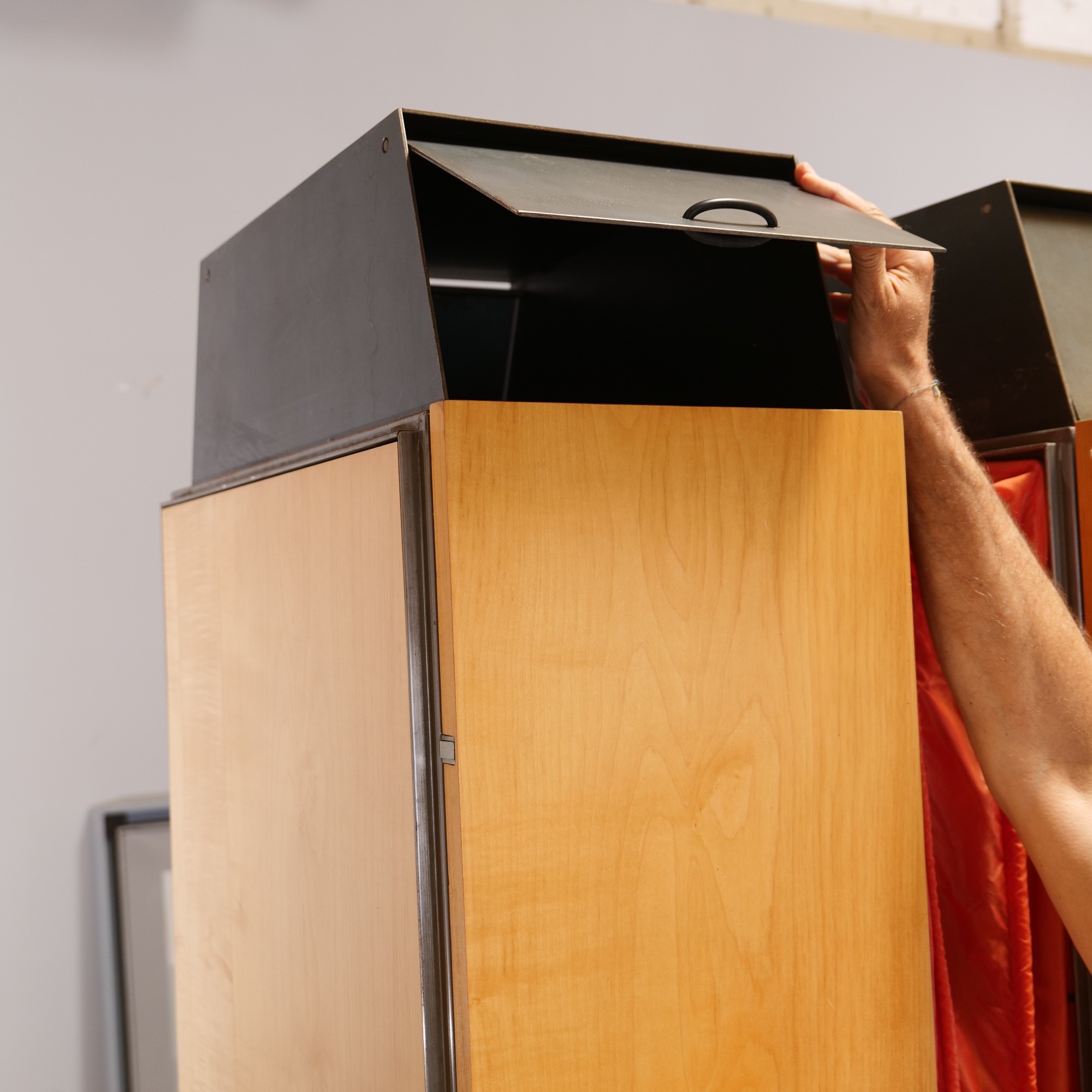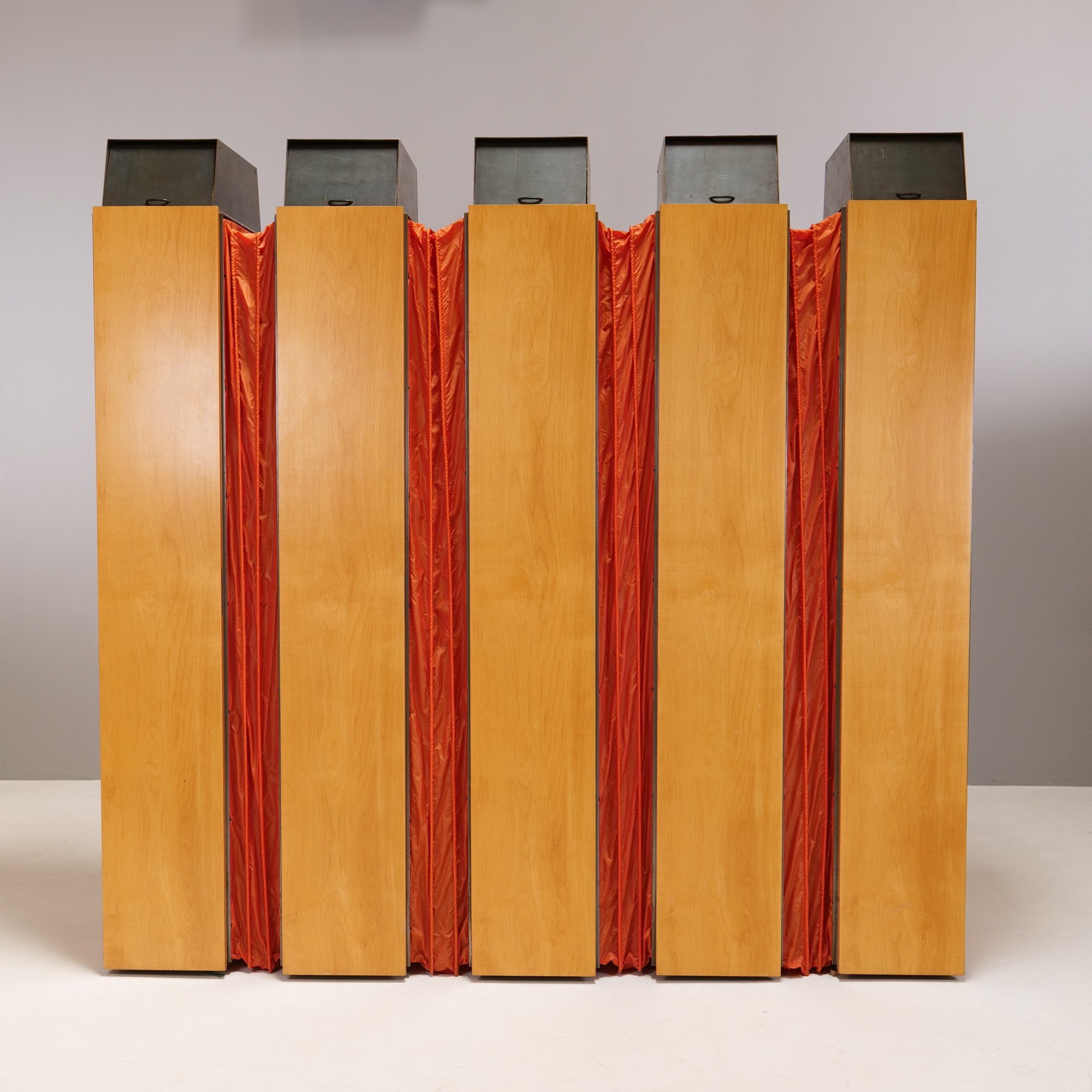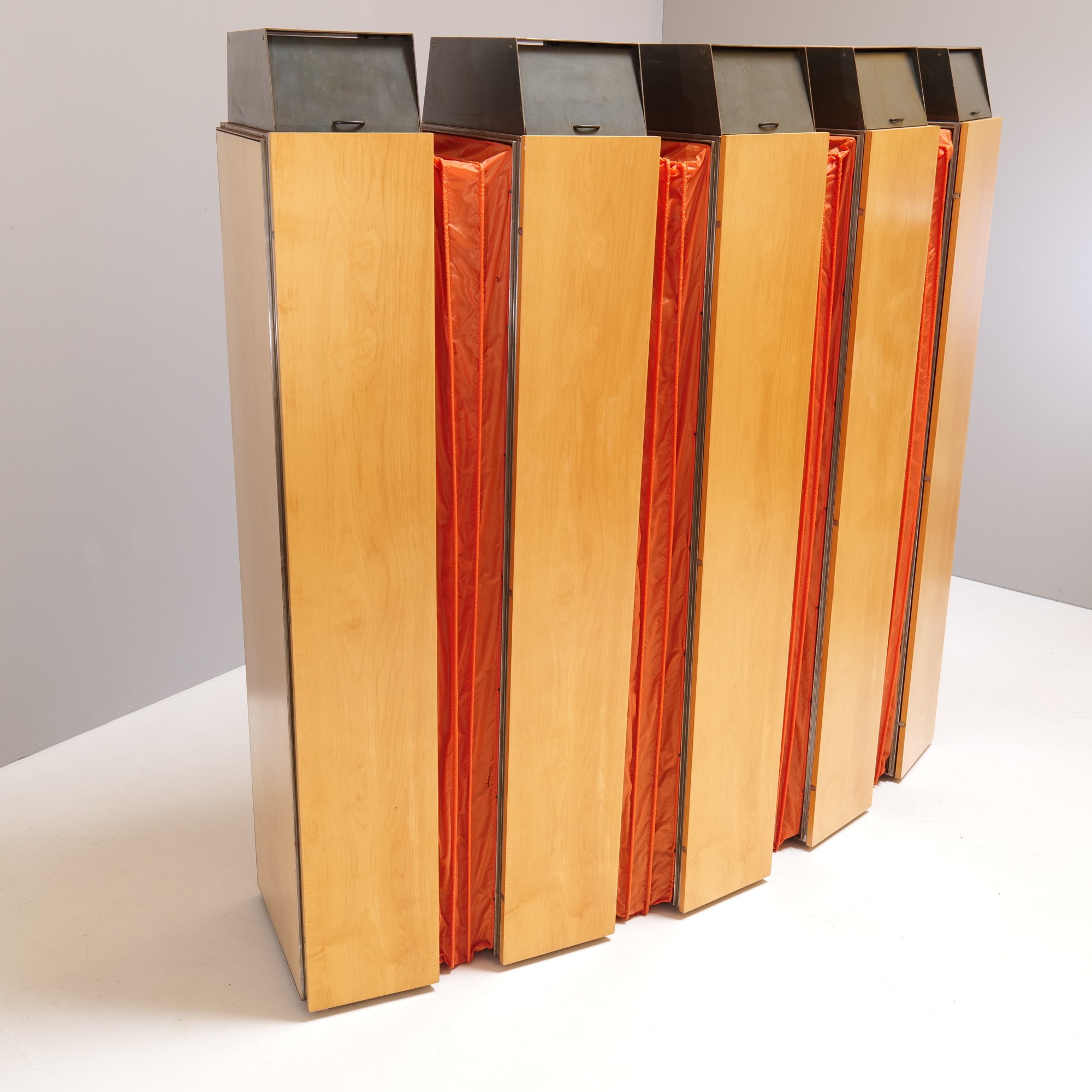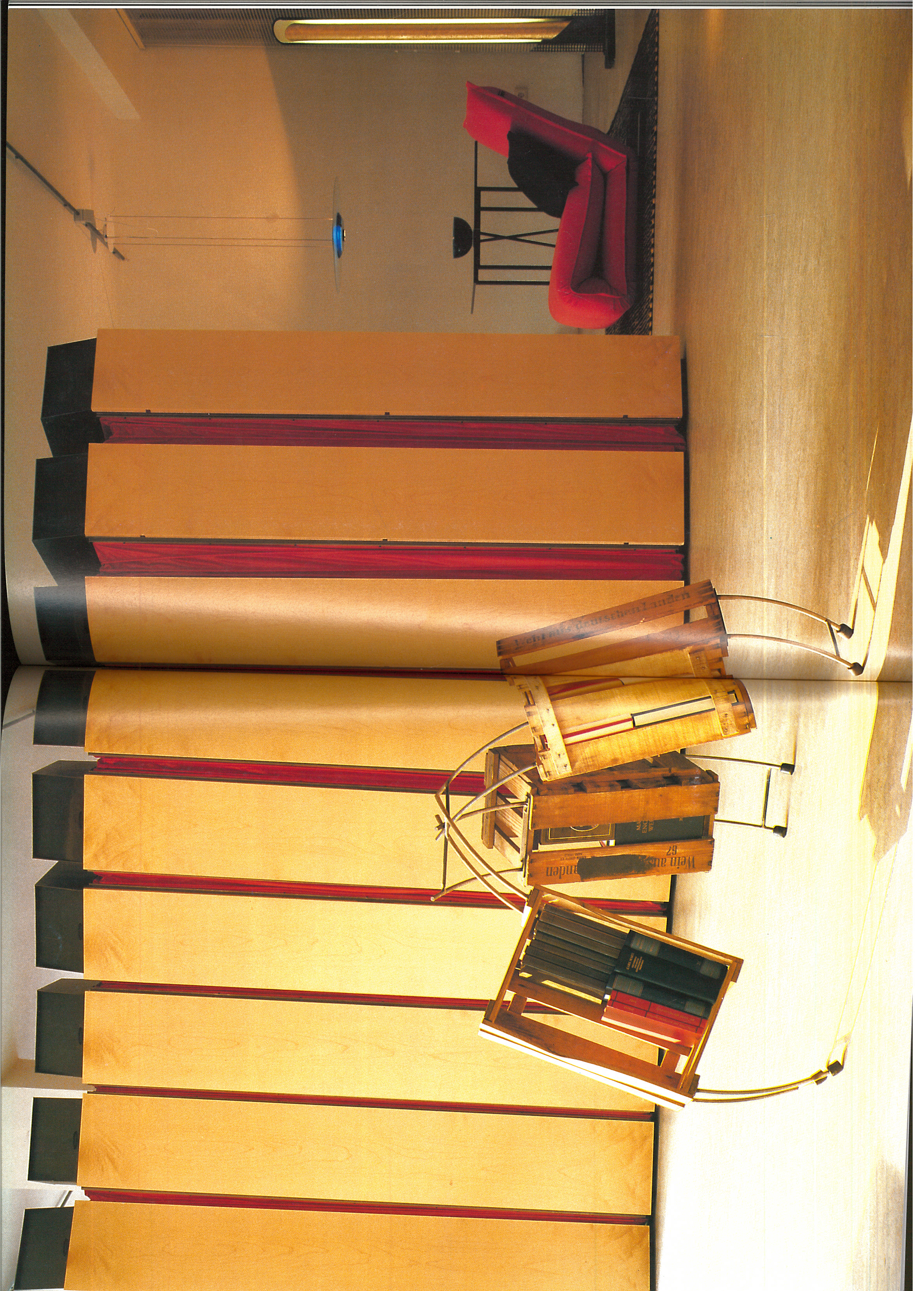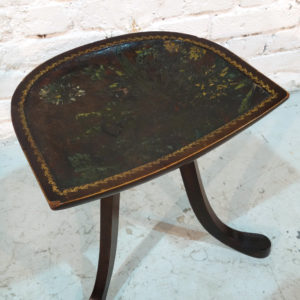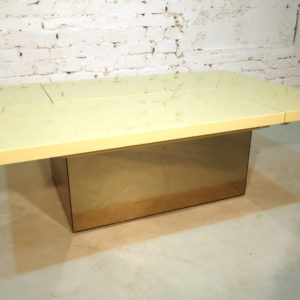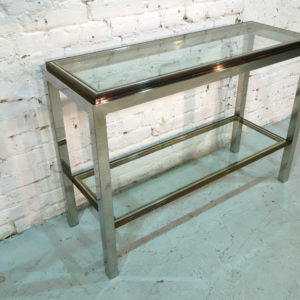Group Pentagon, Detlef Meyer Voggenreiter, Wagon-Lit, 1987
PRICE ON REQUEST
“Wagon Lit”, a cabinet divided into five individual single-door elements by the group Pentagon, designed by group member Detlef Meyer-Voggenreiter.
The individual elements are in turn connected, similar to an accordion, with unfolded fabric panels made of umbrella fabric.
The three middle elements have no side walls and thus the cabinet is completely continuous inside from one side to the other.
There are 4 wooden shelves that have a device in iron to hang hangers.
There are another 10 wooden shelves with iron edging.
At the back, each of the cabinet segments has an iron plate.
On top of each of the elements is an iron box, which can be opened by a flap on the front and back.
Detlef Meyer-Voggenreiter also designed the cabinet as a room divider.
According to current information from Wolfgang Laubersheimer, only 3 pieces of the model “Wagon Lit” were produced, as it was too expensive to complete.
One is privately owned, another is lost and the third is offered here.
Wagon Lit 1987, steel, maple, umbrella fabric
W 185 – 265 H 233 T 60
Pentagon was a group of artists founded in Cologne in 1985, which is one of the protagonists of the New German Design.
The five members are Gerd Arens, Wolfgang Laubersheimer, Detlef Meyer-Voggenreiter, Reinhard Müller and Ralph Sommer.
Previously, the group called itself “Unikate”.
The objective was to manufacture everyday furniture.
In the 1980s, New German Design radically revolutionized the functional understanding of design and built a bridge between everyday objects and art.
This was reflected in a completely new design language.
Colorful and soft materials were replaced by raw and rugged ones.
The “perfect” gave way to the unfinished.
This departure from “good form” had arisen earlier in Italy, Postmodern Design, inspired by the concepts of Memphis and Alchimia.
Pentagon worked with steel and Plexiglas, combining it with stone, rubber and leather, or with everyday objects.
Many of the ideas emerged in the process.
Failure was part of the plan.
Failure inevitably gave rise to new ideas and possibilities.
The object was not created on the drawing board.
Probably the dynamics within the group and their individual approach to problems had also produced a lot of creativity.
One did not have the orientation to produce design or art but one had the desire to do.
On the wave of the zeitgeist that was emerging in art and music, the Pentagon collective took its course.
Initially by setting up jeans stores, then in 1985 the opening of their gallery in Cologne, which was also provided as an exhibition space for other groups, for example, the Hamburg group Möbel Perdu, Siegfried Syniuga, Jasper Morrison, Stiletto, Hans-Peter Adamski or Andreas Brandolini.
In 1987 Pentagon designed the legendary “Café Casino” at Documenta 8.
Documenta 8 curator Manfred Schneckenburger had previously discovered the group at the Cologne Furniture Fair and invited them to participate.
Other exhibitions followed.
Here are some of them:
1985 Barockoko “The tendency to the total work of art” Gallery Furniture Perdu Hamburg.
1986 “Emotional Collages” Living of the Senses Art Museum Düsseldorf
1986 “Explorations” Design Center Stuttgart
1987 ” Biennale” Sao Paulo, Brazil
1988 Gallery Menz in Cologne
1988 Design Heute German Architecture Museum, Frankfurt am Main, Weeling Projects Zeus Milan, Grasp in the Dust, Cologne
The history of the Pentagon group and New German Design based on interviews and archive material.
20 min. Author: Jan Rothstein, © MAKK – Museum für Angewandte Kunst Köln
Lit: PENTAGON
INFORMAL DESIGN
Benedikt Taschen Publishing House GmbH Co. KG
From this book the double-page photo by Klaus Frahm
Illustration: Meyer Voggenreiter: Library “May 68” and the cabinet
“Wagon -Lit”, 1987




